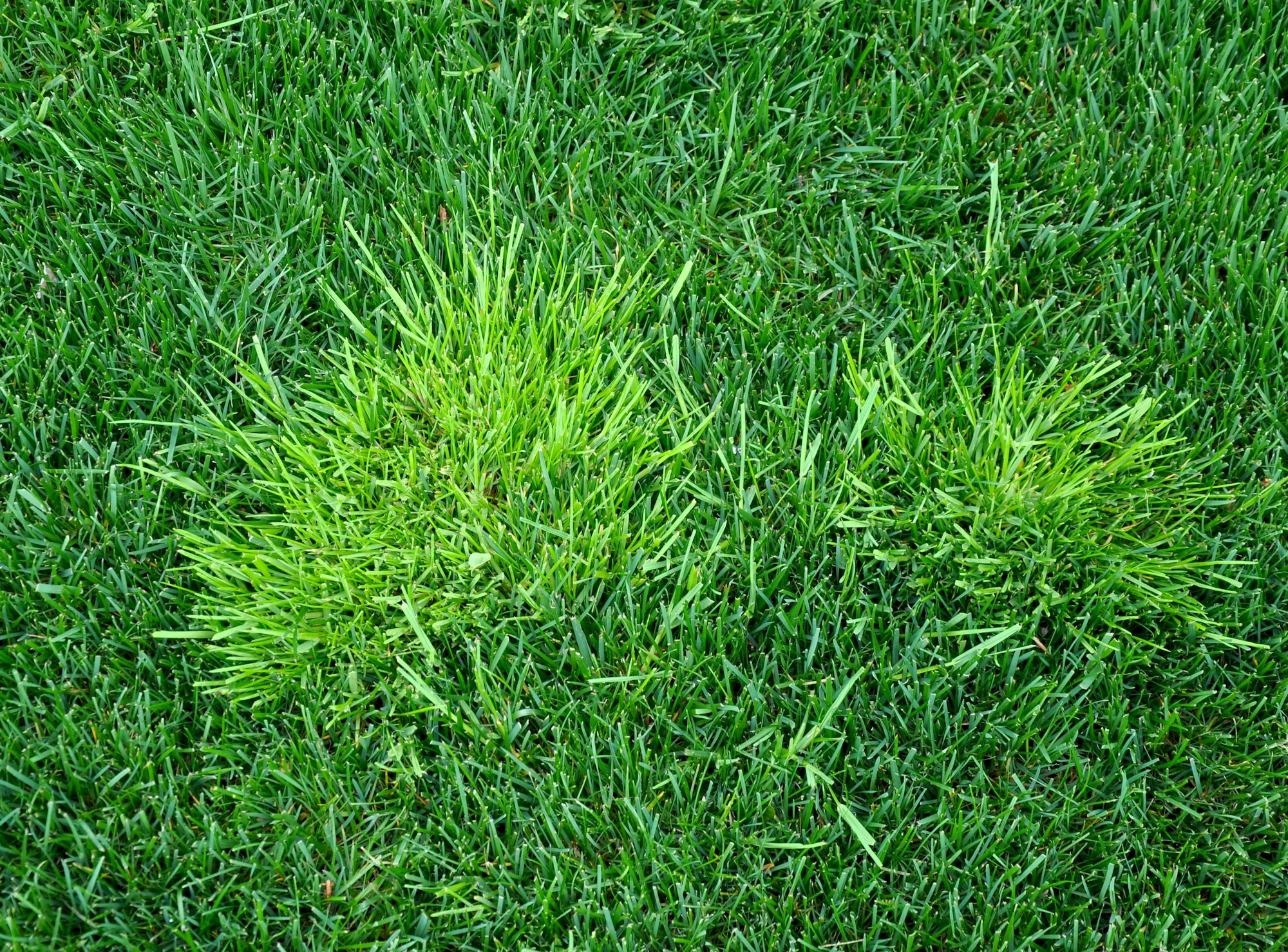Rough Bluegrass
Whatever your grasses purposes are, from home use to an athletic field, it is good to have some insight into what type of grass works well for various conditions.
We’ve provided the most important information on Rough Bluegrass below to help you determine if it’s the grass you’re looking for.

Some Facts About Rough Bluegrass
This type of cool season grass is one that is used for shaded turf in fog belt areas.
It may also be used to overseed Bermuda grass that has gone dormant. However, one of the downfalls of Rough Bluegrass is that it does not hold up well in areas that get high traffic.
In other words, it would not be a good choice for athletic fields. This grass, the Poa trivialis, is also sometimes referred to as Roughstalk Bluegrass. Technically, it is classified as a grassy weed that is a perennial.
So what makes it a weed?
Rough Bluegrass is classified as a weed because it is lighter in color than the Perennial Ryegrass and the Kentucky Bluegrass and also because it forms noticeable patches in home lawns of other types of grasses.
You can find this grass in a variety of habitats across North America.
In fact, in the United States, it is easier to simply list the states where you are not likely to find Rough Bluegrass instead of all of the states where it is likely to be found. Here’s that short list:
- Florida
- Arizona
- Louisiana
- North Dakota
- Arkansas
- South Carolina
- Mississippi
However, this grass’s low tolerance for heat and drought means that it needs care and watering to prevent it from browning. This is why it is not found in states like Florida and why it’s not always the most popular choice across other states. In the U.S., it is most common in the northern states.
This type of grass can go dormant in the summer but retains its green hue through winter months. This is one of the few grasses that can be considered useful as turf or a pest when it is cropping up as a weed.
Characteristics & Traits
Rough Bluegrass is considered a cool season grass and is best suited for cool, wet, and shady areas.It is identifiable by the following characteristics:
It is a fine-bladed grass. Its light green color.
The leaves of this grass are folded at the bud.
The root system of the Rough Bluegrass is shallow. Like many of the warm season grasses, it spreads through the use of stolons. Its spreading ability would be classified as moderately vigorous. The leaf blades of this grass type slightly taper and create a distinguish- able boat shaped end.
The underside of the blade is glossy. Its long ligules are toothed at the tip, but the collar is broad and smooth.
This type of grass requires rich soils. Unlike a variety of other grass choices, this one does not fare well with a variety of soil conditions. It also requires a great deal of water, making it somewhat high maintenance compared to other grasses.
As expected, this means Rough Bluegrass is not drought tolerant.
This cool season grass also does not adapt well to heat. Anything over 80 degrees can cause this grass to brown out rather quickly.
Overall, Rough Bluegrass is usually deemed a troublesome weed except when used as turf grass. As a turf grass, it is ideal for areas with poor drainage and shade such as marshlands.
Where Did It Come From & What Are The Varieties?
Rough Bluegrass is native to the temperate regions of Eurasia. In the U.S., however, it is now most commonly found throughout the northern states.
The best habitat for the Rough Bluegrass is shaded areas with rich soil, such as open wooded areas or prairies. This also means a soil that is cool, drained, and slightly acidic to neutral.
There are varieties that are ornamental or even those developed to be a better choice for a home lawn. Sabre III Rough Bluegrass, for example, is being used for overseeding golf courses, even in southern states.
As a weed, Rough Bluegrass is usually spotted in patches of anywhere from six inches to several feet. It is often mixed in with seeds of other grass choices like Kentucky Bluegrass, which can cause these problems. However, mowing equipment can also transfer stolons and cause this grass to spread.
Advantages & Disadvantages
Whether you see rough bluegrass as friend or foe will determine whether you see any advantages in the below points or all as disadvantages. Here’s an overview of some of Rough Bluegrass’ pros and cons.
Advantages
- Handles low temperatures well.
- Its moderately vigorous stolon root system allows it to grow well without quickly becoming out of control.
- Great ability to handle areas with shade and poor drainage.
tool
Disadvantages
- Not drought tolerant.
- Does not handle hot temperatures well.
- It requires high water levels— even without drought-like
conditions. - Not great for areas with high foot traffic.
- If not being used as turf grass, it is basically considered a weed.
- In cases of being a weed, it can actually begin to be aggressive and threaten native species.
Establishment & Maintenance
Rough Bluegrass spreads through both seed and stolon.It spreads the quickest in cool weather, particularly in shaded areas. This could be good or bad news for you.
So what if you are more interested in learning how to control this weed instead of establishing it as a turf grass? Controlling mixed strands of Rough Bluegrass can be challenging. Early eradication is key to preventing it from spreading.
As a weed, one option for removal is by hand pulling. This works for smaller patches if caught early enough. Take care to remove the roots and not just the visible grass.
You can also spot treat with chemicals. Glyphosate is a good choice for this.
Once more established, Rough Bluegrass must be treated aggressively with herbicides. Be sure what you use is intended for this type of grass or else it may also destroy the grass you are trying to protect.
If the lawn you chose has a grass type that can handle drought, you may want to skip watering and irrigation for a while. This may be able to help eradicate the weed while saving your other grass. Although heat will brown Rough Bluegrass out, it usually only goes dormant and will come back to life once cooler temperatures arrive.
Watering, Mowing & Pest Management
Since Rough Bluegrass requires frequent watering, it would be a good idea to have an irrigation system in place to be sure you can maintain the demanding watering schedule that will be required. In addition, you will want to regularly fertilize.
When it comes to mowing, it all depends on whether you are trying to cultivate Rough Bluegrass or get rid of it. To take care of another type of grass without encouraging the spread of Rough Bluegrass, keep in mind that low mowing height can only add to the problem.
This type of grass becomes very competitive at ½–1 inch, so to discourage this as a weed, you should mow above this height. However, to encourage healthy Rough Bluegrass turf grass, this mowing height could help it flourish.
For this type of grass, you should use 2–4 pounds of nitrogen per every 1,000 square feet. It is best to use this type of fertilizer during times of active growth. This would usually mean anytime from March through June or again from September through November.
Rough Bluegrass is susceptible to the usual diseases and insects that can harm turf grasses. If you are trying to keep a healthy Rough Bluegrass, you should watch closely for spots where the grass picks up a bronze hue. It will often look like a patch where a chemical product has been spilled on it. This is a sign of heat stress.
Whether you want to encourage the growth of Rough Bluegrass or get rid of it, make sure you are well informed about what you are dealing with in either situation.







